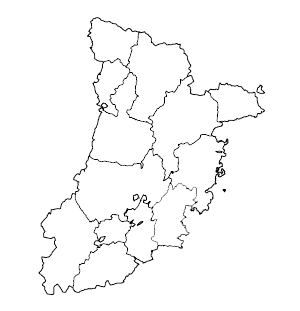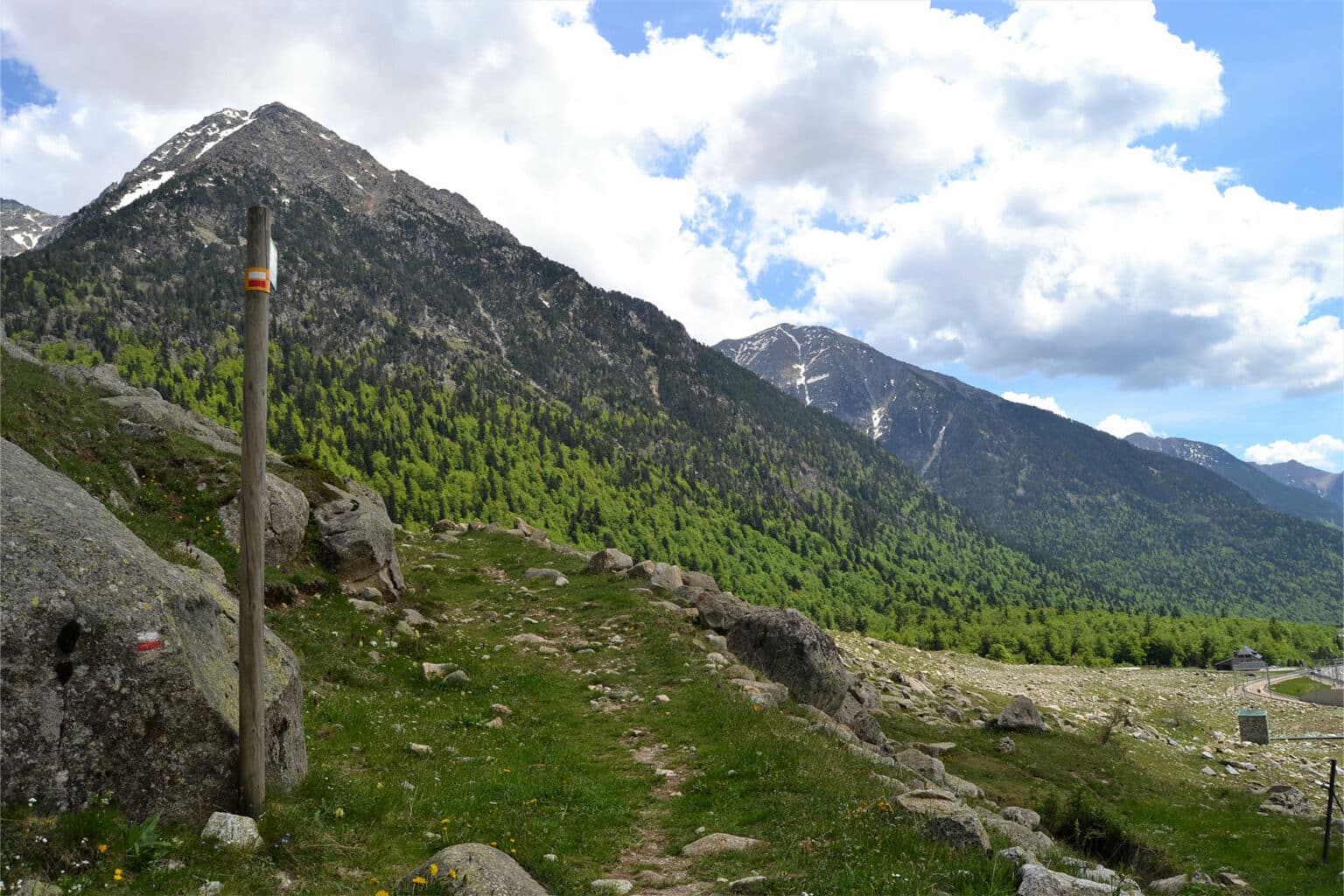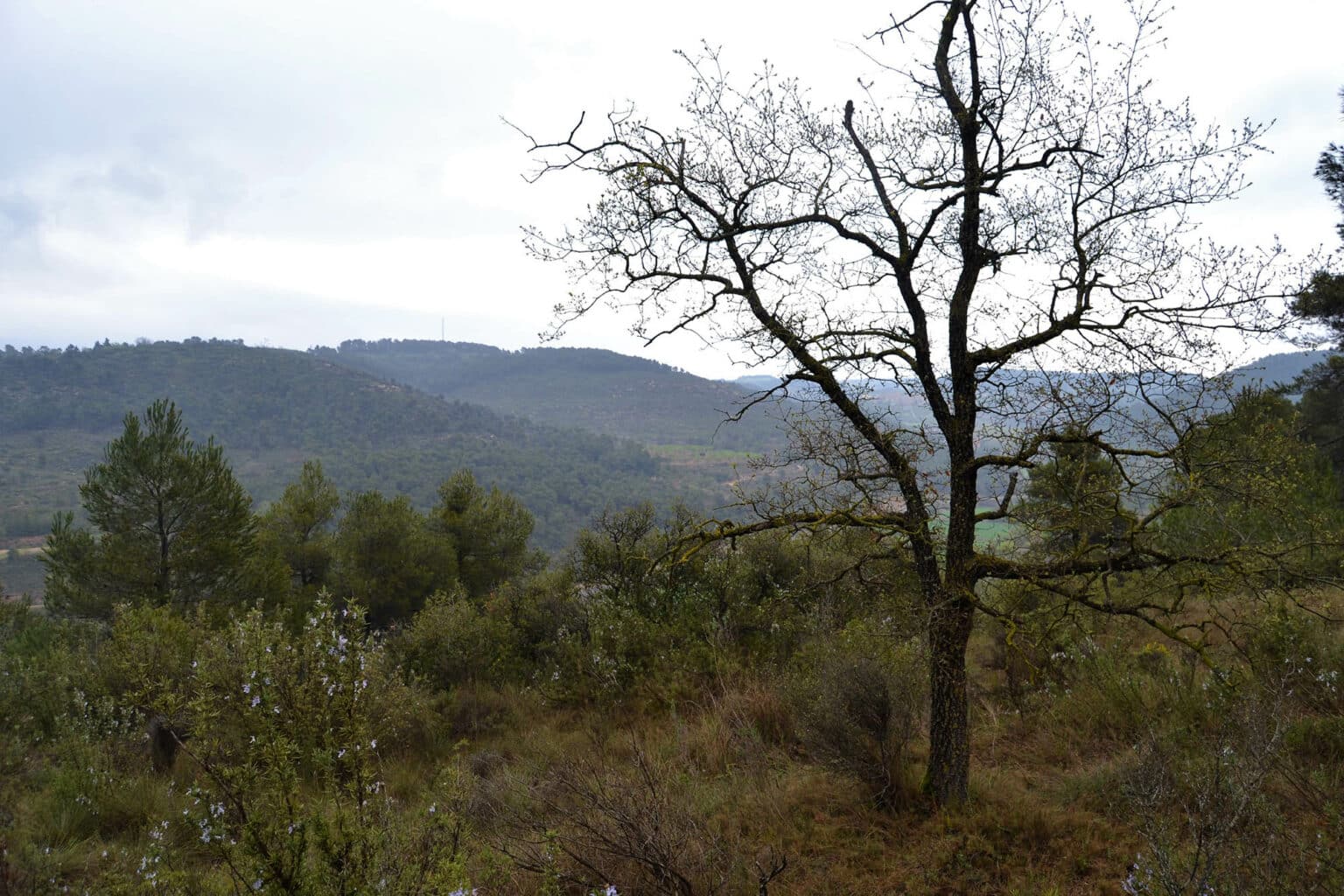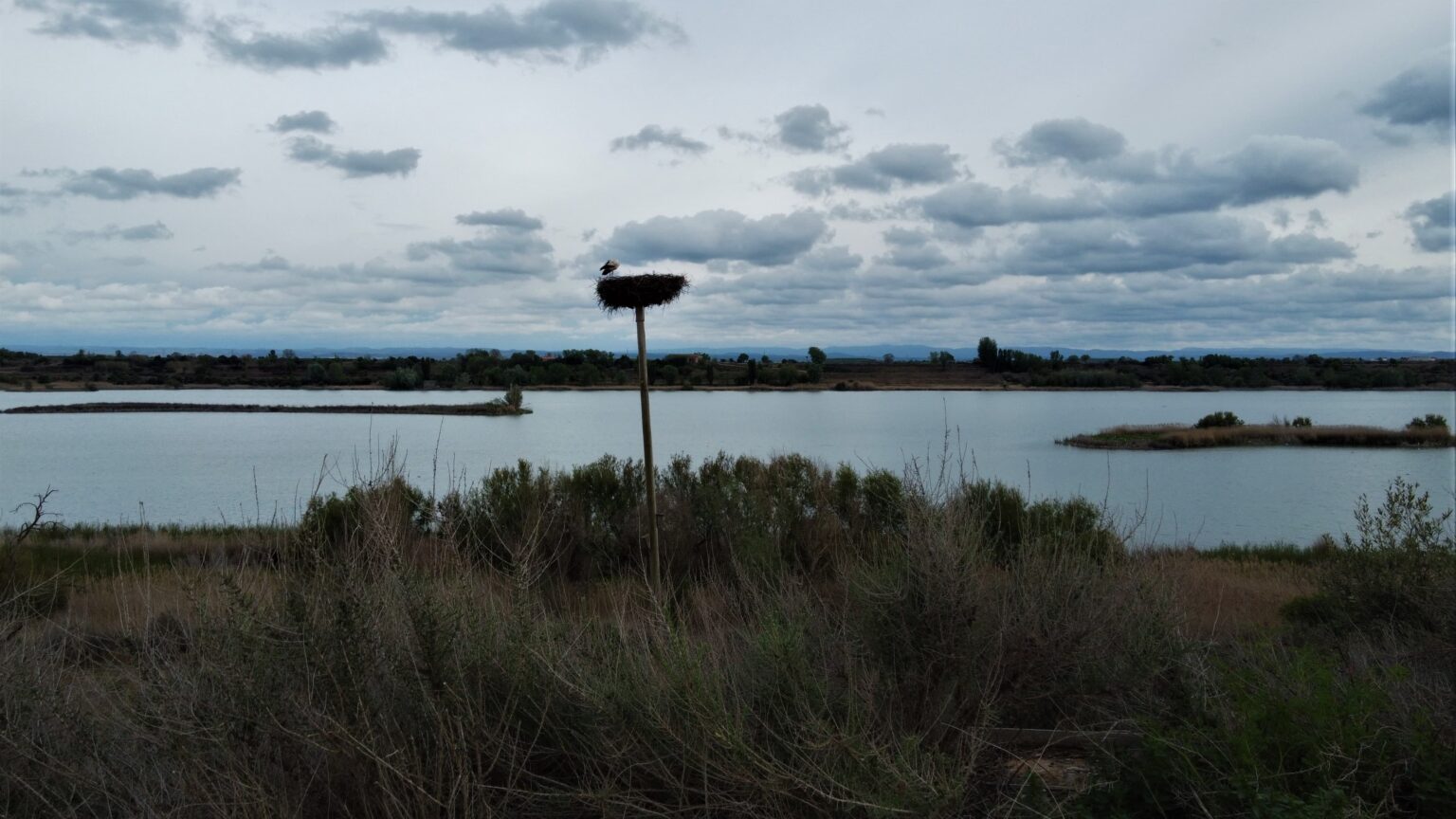FOREST BATHS

Among holm-oaks and the remains of the medieval village of Meià
Under the protection of the Serra del Montsec mountains, and with an enormous extension, the comarca (local district) of La Noguera offers two main, and well-differentiated, types of landscape: upper La Noguera, which is dominated by El Montsec, and lower La Noguera, which lies on the la plain. In this area, the most characteristic mountains are, without a doubt, those of El Montsec, which is a pre-Pyrenean ridge that will surprise visitors with its step cliffs, which provide a favourable habit for numerous bird species. Although part of the same mountain chain, the rivers Noguera Pallaresa and Ribagorçana have formed the Montsec d’Ares and the Montsec de Rúbies massifs, whose cliffs form one of the most representative ecosystems of the latter. Their cliffs and gorges, which appear as imposing walls of limestone rock, are an obstacle for the vegetation, which is now normally found in cracks and on small ledges, here.
El Montsec de Rúbies, which is also known as Montsec de Meià, is the easternmost massif and is in the Meià river basin. This is where the area for forest bathing can be found, in the municipal district of Vilanova de Meià. Once at Vilanova, it is necessary to head for the Puig de Meià meadow, where the old village of Meià used to stand, until around the year 1100. It is necessary to go up there via the Pas Nou road and then turn left at the intersection with the El Montsec path, which is only a short distance from the former charcoal cleaning site (which is signposted). Half a kilometre further on, and off to the right, there is a crossroads that will take you to the Paús spring. Continuing straight ahead, along the path, you will reach the top of the Fita climb. It is then necessary to turn left and to take the (signposted) path that leads to Meià.
Puig de Meià stands well above the village of Vilanova and there is a large open space there where it is possible to park without causing obstruction. A little further on from the parking area (which is not signposted as such) stands the church of Our Lady of El Puig, which is in a perfect state of conservation, and a mountain shelter (which is not always open). Closer to the parking area, it is possible to see the remains of the tower of a medieval castle. It should be added, in passing, that in the first week in May, there is a celebration here that fills the former village of Meià with people. It is certainly worth bearing this in mind, as this is the busiest time of the year here. In the rest of the year, the days tend to be very quiet and you would either find no-one or very few people here.
As an alternative to using a motor vehicle, it is easy to get to the Puig de Meià meadow on foot, from Vilanova. This walk could complement, or form part of, your forest bathing. The distance is about 4.2 kilometres and the route is well-signposted. Once at the meadow, the vantage point there offers some of the best views over La Coma de Meià, El Cogulló and the Segre plain. On the other side of the massif, the dominant sights are the cliffs of El Montsec de Meià, with El Mirapallars as its highest point, standing at an altitude of 1,668 metres. After this reception area, you can go to the site of the former medieval village, which used to have more than 100 hearths (in the past, population tended to be counted by hearths, rather than by the number of inhabitants), and see the remains of Ca la Carlana (a fortified house), houses, sections of wall and even some traces of former roads. This is an area in which you can enjoy a very original version of forest bathing. It is dominated by an immense holm-oak which coexists with typical dryland Mediterranean vegetation.
The space for forest bathing
As previously stated, in this area there is vegetation which is typical of dryland Mediterranean country, with a clear predominance of holm oak (Quercus ilex), some examples of Portuguese oak (Quercus faginea) and some brushwood species, amongst which the smell of rosemary (Rosmarinus officinalis), an aromatic shrub which is frequent in holm oak groves, particularly attracts the attention. The holm oak is a type of evergreen tree which is characterised by its dense crown and can reach heights of 10-20 metres, although it is not common to find examples that are over 12 metres tall. Holm oak forests are usually green at all times of year, although the shades of green may vary, and there may be a continuous tree layer providing generous amounts of shade which is particularly appreciated at the hottest times of the year. The bark of these trees is also green, although trunks and branches tend to be greyer in colour and to get darker as they grow. When a tree is over 15 years old, its bark may crack, resulting in a much darker trunk. Its fruit: the acorn, matures in autumn and is very much appreciated as food for pigs. If these animals do not eat them, once mature, they fall to the ground and end up composting. This perhaps explains why it is easy to find their remains, in different states, accumulated around tree trunks.
As you will see on arrival, today, the former settlement of Meià is dominated by an extensive oak grove. In fact, we could venture to say that there are possibly more oak trees today than there were when the village was inhabited, back in medieval times, when oak wood was very useful for many different purposes, including making tools and exploiting the forest. The production of charcoal is a use to which oak wood has been put since ancient times, in this part of La Noguera. We know that the original nucleus was inhabited during the Visigoth period, but we do not know whether it dates from before that time. We do, however, know for certain that trees played an important role in Greek and Latin mythology and that forests were the first places of worship of the Greeks and Romans. Those civilisations used to take care of, venerate and protect trees, which were seen as symbols of the union between the natural and human values related to life. The evergreen oak and the Portuguese oak were considered sacred trees, with the former being the ultimate symbol of strength, solidity and longevity.
It goes without saying that one of the most unique characteristics of this oak grove is its location. As a result, the place recommended for forest bathing is the old medieval village of Meià itself. To the north, there are the remains of the wall of one of the towers of the fortification of Ca la Carlana. To the south-east, there are the remains of the castle of Meià, whose round tower was possibly of Arabic origin. It is also possible to see a water tank, entrance door, and part of the facing of the 11th century wall. Even so, slowly walking along the ancient parts of the paths, and across this great opening, which is so full of history and symbology, gives plenty of scope for activities through which to interact with the natural environment.


















